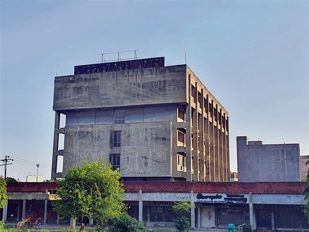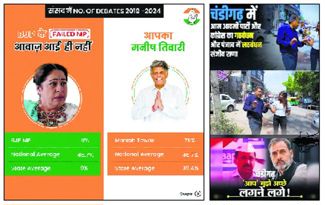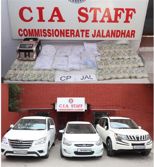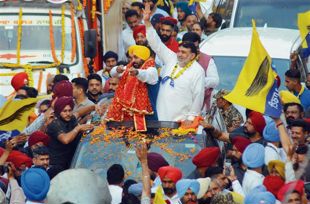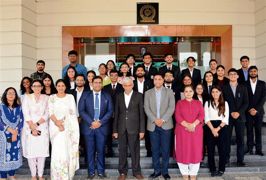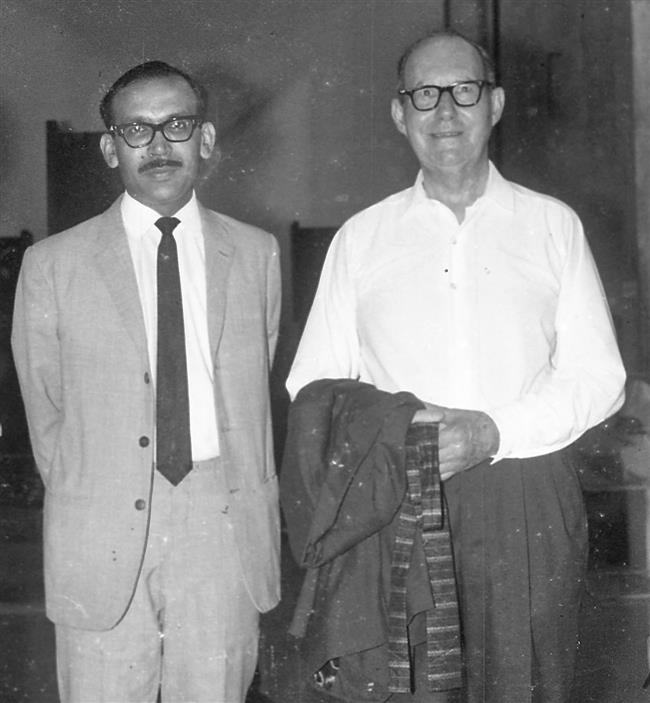
A mid-1970s' photo of BN Goswamy (left) and WG Archer, a pioneering scholar of Pahari painting.
Neelam Mansingh Chowdhry
How does one write about a remarkable scholar and mentor in the past tense while simultaneously trying to process the grief of losing him to the unknown terrains of eternity? Making my emotions an entangled web of memories and moments shared, I am nervously pondering if it is estranging, alienating or healing. I do not know. It’s almost like inhabiting two worlds while deeply desiring to reside in only one.
Prof BN Goswamy was a teacher with layers of insights that both overwhelmed and impressed his raw, gangly students
It is always a trifle surreal to write about a teacher and a friend with whom one was always sharing anecdotes and memories of days gone by, while also talking about his new book that was being sent to a publisher. Trivia mixed with rigorous artistic insights was the tone of the evening we spent together just a week ago.
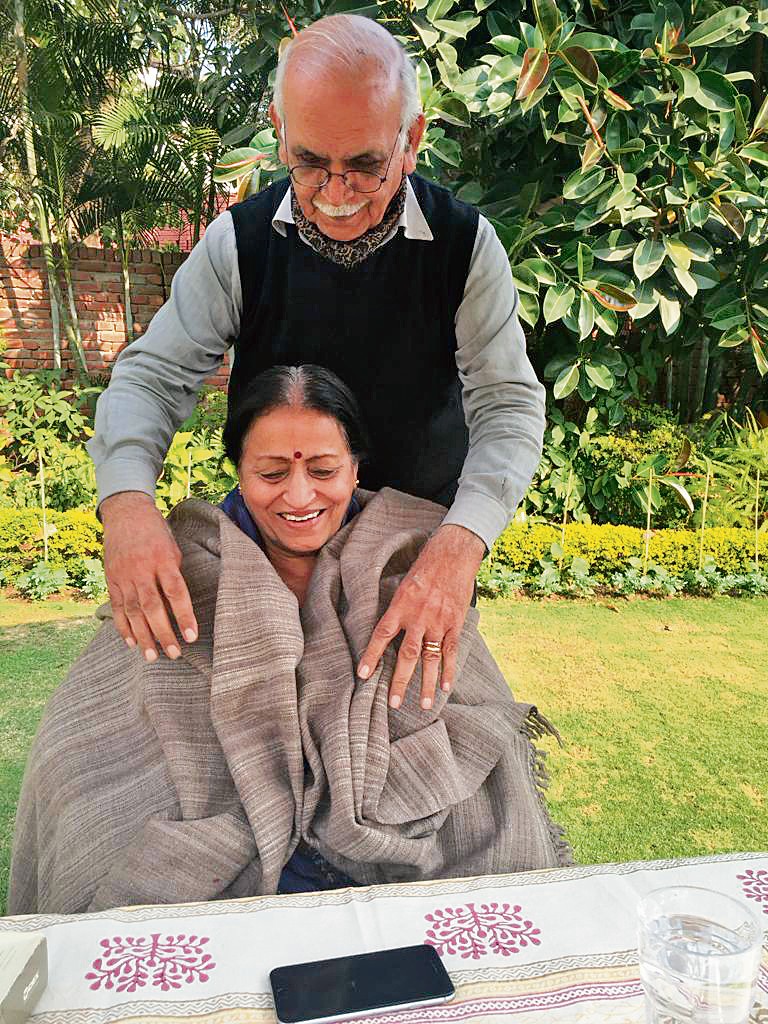
photo courtesy: Jasinder Sekhon
Dr BN Goswamy was not only revered and loved, but also had the power to transport us through a portal of magical words and images that enriched our world and expanded our perception.
I feel privileged to have been his student at Panjab University in the early Seventies. I still recall his grainy voice, his impeccable sense of dressing, highlighted by his silk cravat casually wrapped around his neck. Every lecture he delivered was an enchanting journey, leading us into the minutiae of art history. He seamlessly segued the worlds of the past with the present. He inspired us to explore deeply and ferret out hidden nuggets of embedded ideas that organically unlocked our ways of seeing a Wassily Kandinsky or Paul Klee. He was like a sleuth, making us look for clues in works of miniature paintings and modern art, enriching our minds as young scholars.
He insisted that we introspect and reflect to nurture fresh ways of seeing. He believed that our eye was a wonderful instrument that constantly needed to be trained and prepared.
While looking at the miniature paintings illustrating Jayadeva’s epic Sanskrit poem ‘Gita Govinda’, he subtly led us into the world of gods and goddesses, animals and birds, and flora and fauna that were not hagiographic, but real and palpable, with their desires and flaws, meshing the sacred with the profane in extricable ways without judgment or subterfuge. By creating openings and unlatching imagined doors, he made art accessible to us.
Even amongst those who knew him, Dr BN Goswamy has always been a subject of debate and analysis. I remember, in my early twenties, as a student of PU, walking up the unwieldy staircase, with the smell of phenyl following me undeterred, as I knew the magic that awaited me in the classroom. He was a fascinating teacher with layers of insights that both overwhelmed and impressed the raw, gangly students that we were. His turn of phrase and enunciation was silently followed.
I have known Dr Goswamy for many years. He married my father’s best friend’s daughter, Karuna. She was a beautiful and compassionate scholar herself. In Amritsar, her family lived in the same lane as my parents and she will always remain Kuku didi to me. Their love for each other was part of Chandigarh’s folklore and her death during Covid was devastating. Before he could recover from the loss of his beloved wife, his son Apurva passed away. Dr Goswamy became emotionally frail and one could sense his debilitating grief, overshadowing his every breath. Resiliently, he forged ahead and his love for research never vacillated.
I met him last Sunday and I felt the pain that had engulfed him. Despite these vicissitudes, his politeness and grace was, as usual, in evidence. While enduring unimaginable sadness and sporadic hospitalisations, he completed his six-volume compendium on ‘The Great Mysore Ramayana’ from the early 20th century, created during the Krishnaraja Wodeyar period.
His recent book, ‘The Indian Cat’, contained stories, paintings, proverbs and poetry about the feline world. This was certainly a point of departure from his expected writings. The book is a delightful compilation, not only of Jataka tales, but is also annotated with comments and asides. It is a collector’s item. Cats turn into characters who cleverly trick the bodhisattvas in their connivance and cunning flip of the tail! A marvel of a book, indeed. In a lecture on his new book, he mentioned with delicious humour, “Dogs eat. Cats dine.” This line resonates in my head as cats are very much a part of my home.
Gulammohammed Sheikh, the artist, called him a “national treasure”, a title he richly deserved. A deprecating and wry sense of humour was his hallmark, which he used judiciously to underscore an idea or as a punctuation mark, as a parenthesis or just to lighten the mood.
His lectures were like a pop concert, with a packed house full of students and scholars who hung on to his every word, indeed an unusual phenomena in the academic world. His wide range of references were almost akin to a puppet show of marionettes held on the strings of a master puppeteer. Like magical jugglery, his lectures were a dazzling performance of restraint, with superb dialogue delivery and dramatic pauses. His talks were spell-binding, with references from Urdu and Persian poetry, Sanskrit shlokas and Punjabi idioms. Dr Goswamy was the star attraction in many literary festivals where his audience thronged and scampered for seats. He was, indeed, an intellectual rockstar!
I have, over the years, watched Dr Goswamy answer the most trivial and irrelevant questions with sincerity that displayed both a deep love for his subject and respect for the spirit of enquiry. At lectures and talks, he linked themes within art, history, politics, poetry, life and humour into a mesmerising pattern of intricate ideas, without intimidating or making the listener feel uncomfortable. Suave and urbane, sensitive and erudite, he had crystallised within himself the concept of the Renaissance Man.
He always longed for abstraction, nudging us to leave the world that is visible, close to us, and yearn for something intangible. Using analogies about a drop of mercury on one palm and expecting it to remain still would be an anomaly, Dr Goswamy said in one of his lectures. The entire city of Chandigarh and the art world mourns this irreparable loss. Farewell, dear teacher.
Join Whatsapp Channel of The Tribune for latest updates.





















